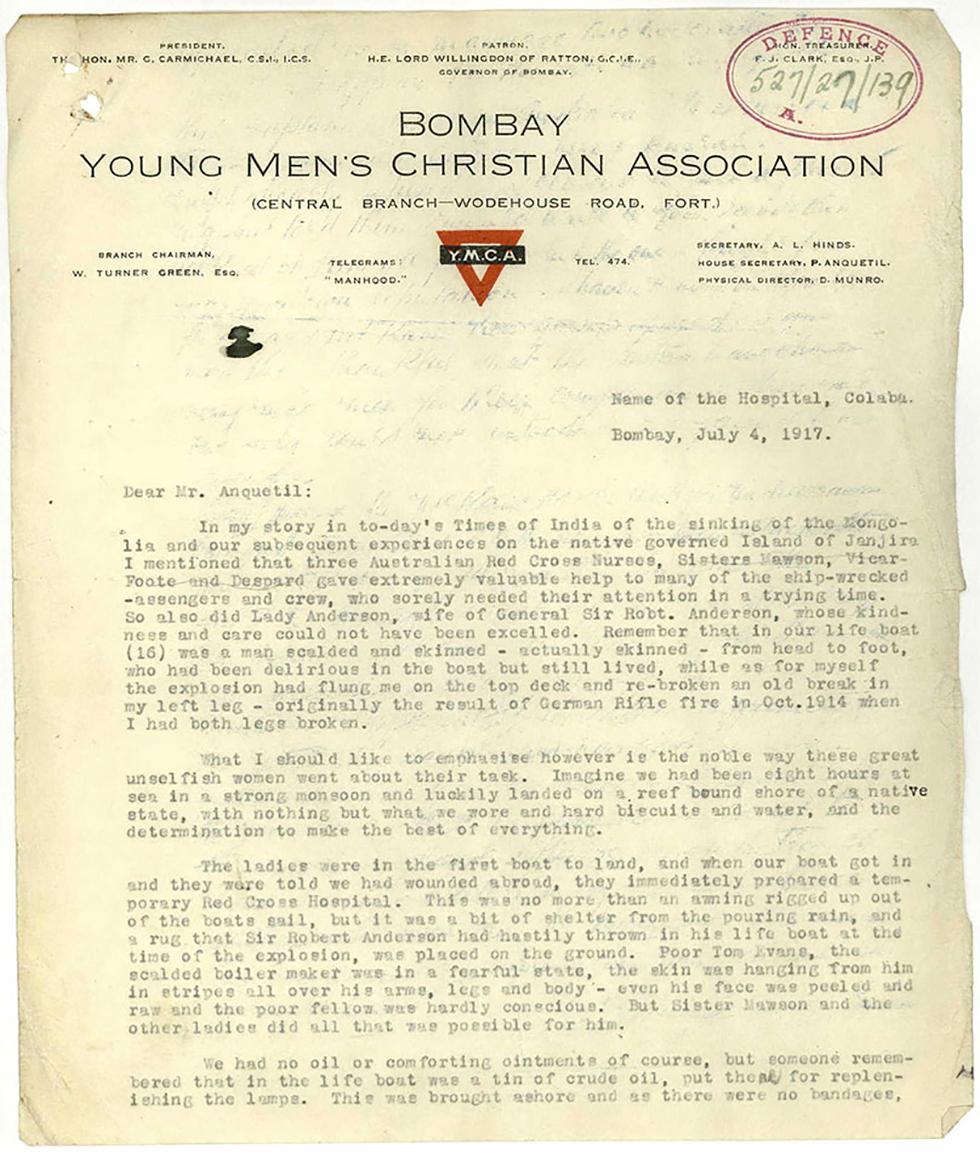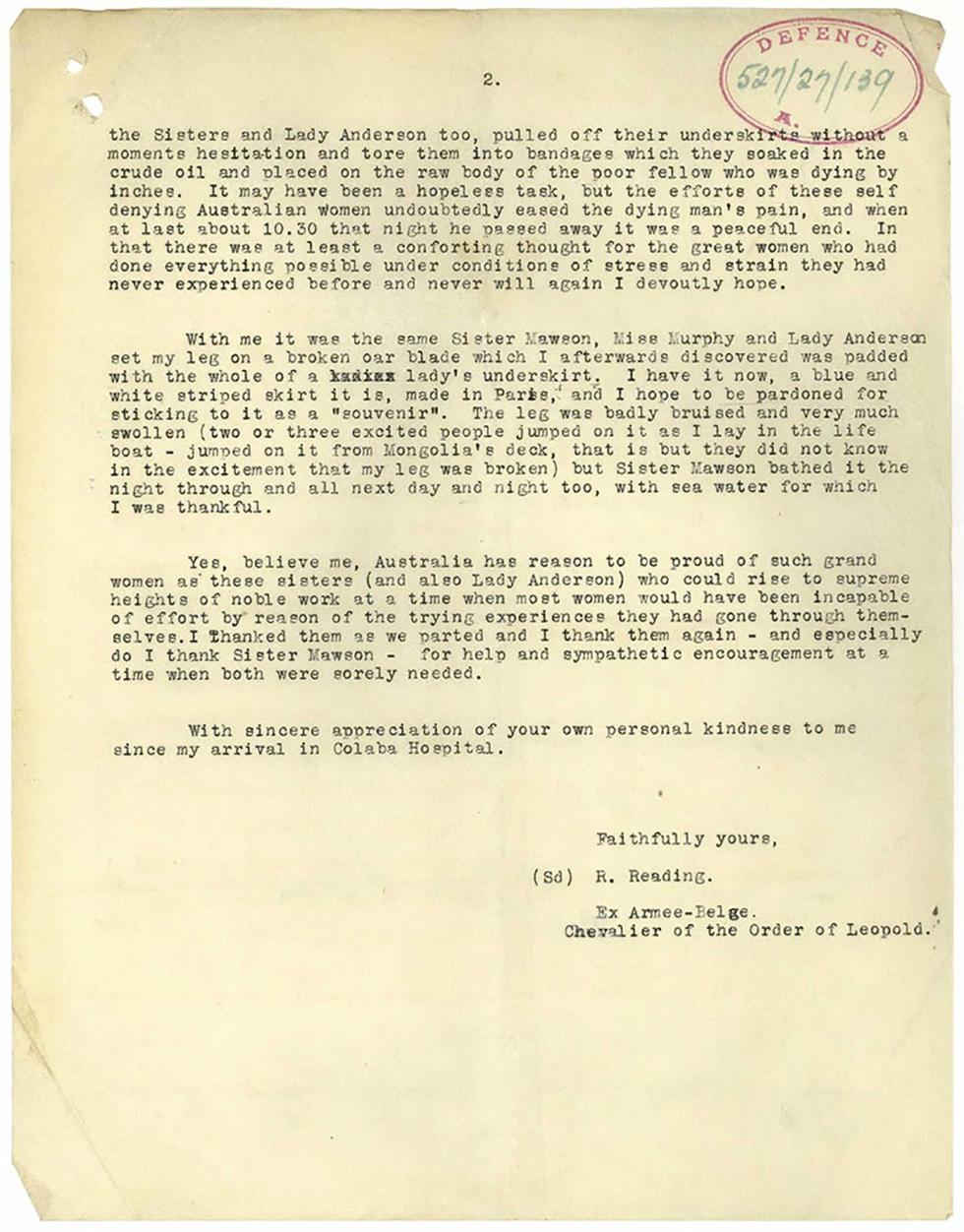

Aboriginal and Torres Strait Islander people should be aware that the National Archives' website and collection contain the names, images and voices of people who have died.
Some records include terms and views that are not appropriate today. They reflect the period in which they were created and are not the views of the National Archives.



This two-page typed letter came from Richard Reading, a soldier who served with the Belgian Army. Dated 4 July 1917, it was sent from a hospital in Bombay (now Mumbai), India. It is one of many letters of appreciation sent to acknowledge the work of Australian nurses in India during the First World War.
Learn how to interpret primary sources, use our collection and more.
